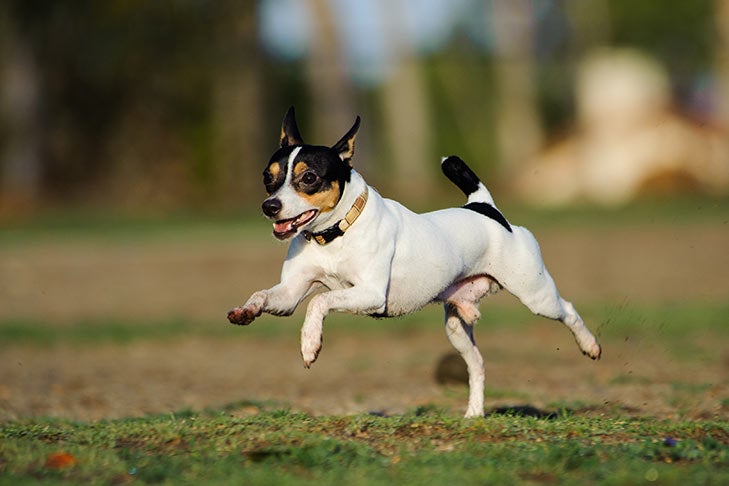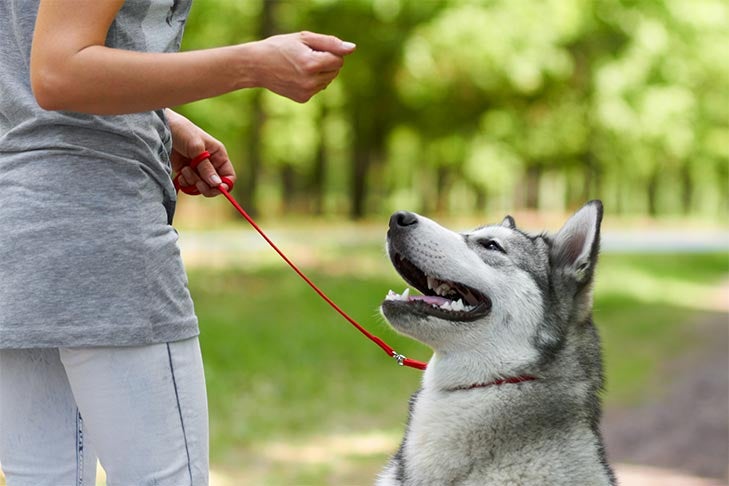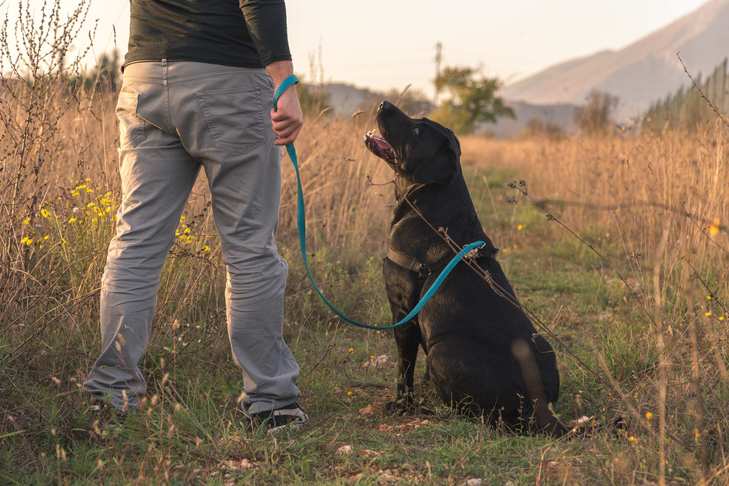
Cars’ sudden and fast movements inspire many dogs’ inner prey drive. Alternatively, the sound or movement of the cars can be upsetting, so some dogs may begin lunging at the vehicles or chasing them. Why do certain dogs chase cars? How can you train your dog to prevent them from chasing cars?
Why Do Dogs Chase Cars?
Dog breeds developed to chase, such as Sighthounds, may often want to chase moving vehicles. Herding breeds also often struggle with this behavior because they were bred to have sharp, attentive vision. Similarly, terriers (bred to have a high prey drive) can also be driven to chase moving vehicles. But lunging and trying to chase moving vehicles is a behavior with which many dogs, regardless of breed, struggle.
What Makes Chasing Cars Dangerous?
Dogs who unpredictably chase cars can easily injure themselves or others. If an off-leash dog chases a car or pulls loose from their leash to chase a car, they might be injured or even killed. When dogs lunge and start trying to chase cars, they can take an owner by surprise and cause the person to fall. This is especially a concern with large dogs, whose size means they can easily pull their owner down.

A dog who builds a habit of chasing moving vehicles may also escalate into other unwanted behaviors, such as chasing people on skateboards, bikes, or rollerblades. A dog pursuing a bike rider or skateboarder could be a bite risk.
Safety First
When working with your dog on any skill, safety should always be the priority. It’s important to always respect leash laws. Especially if your dog tends to want to chase moving vehicles, keep them on leash.
If you’re walking near a road or an area where vehicles are common, it’s best to use a short, six-foot leash and never a long line or retractable leash. This will prevent your dog from getting close to a vehicle. Hold the leash securely in your hand or use a wearable, hands-free leash, where which your dog is attached to you while you train.
Give Your Dog Space
While you are working with your dog to help them develop a different association with moving cars, use pace to your advantage. Many dogs will struggle the most the closer they are to the passing car.
It’s important to keep your dog “below threshold“: keeping your dog at a distance from the trigger. In this case, that means staying far enough from moving vehicles. That way, your dog is still able to focus on you. If you are close enough to a vehicle that your dog wants to chase, you are too close for learning to take place.
How far away from a moving car should you be? The distance will depend on your dog and their comfort level. For some dogs, being on the sidewalk will be far enough away. Other dogs will need you to divert them onto driveways or parking lots to get distance from the street while you are training.
Counterconditioning
Because car chasing is such a natural behavior for dogs, it can be challenging to curb one behavior and teach a dog a new one. Counterconditioning helps to shift a dog’s behavior and response to a distracting or stressful stimulus: in this case, the movement of passing cars.
Even though chasing behavior can be frustrating, and even a little scary, we don’t want to punish our dogs for chasing (or trying to chase) cars. Punishing only suppresses the chasing behavior, but it doesn’t shift how your dog feels about moving cars. As a result, the behavior you want to alter is likely to continue.

Counterconditioning uses positive reinforcement training to help dogs to learn new behaviors and create new associations about the sound and movement of the cars.
Supplies Needed
- Six-foot leash.
- Lots of small pieces of high-value treats.
- Clicker if you are clicker training.
Step 1
At a distance from traffic where your dog is comfortable and able to focus, praise and treat your dog anytime a car passes. If you are clicker training, you can click when each car passes.
Step 2
Most dogs will quickly start to make associations between the car going past and the high-value food. They will begin looking at you when a car goes past in anticipation of a treat. Give your dog lots of praise; reward them for engaging with you when a car appears.
Step 3
When your dog is constantly looking to you for a treat when a car passes, you can start to slowly decrease the distance between your dog and the traffic.

If your dog begins to lunge or try to chase a car, that’s a sign that your dog is over the threshold and needs more space to be successful. For your next practice session, get to a location where your dog has more space from the road. Click or praise and treat your dog for being able to focus on you and look away from any passing cars.
Prevent Relearning the Behavior
It can be difficult to teach dogs not to chase moving vehicles because it comes naturally to many canines. The more opportunities your dog has to rehearse the chasing behavior, the more difficult it will be to stop the behavior from recurring.
You want to try to prevent your dog from being put into situations where they feel inspired to chase. Do this by shifting where or when you walk and by supervising your dog while they are in the yard. Then, you want to create intentional training scenarios where your dog can practice an alternate behavior: looking to you when they see a car instead of chasing. With careful management and training, you’ll be able to help your dog stop chasing vehicles.

